Want to know more about the Best Schools For Geography Degrees In the US and make an informed decision? Here is a good place to start.
Are you feeling lost in a sea of geography degree programs? Don’t worry. We’ve got you covered. If you’re struggling to find the best path for your educational journey, look no further!
We’ve charted out the top US schools to help guide you towards your cartographical goals. So, grab your compass and let’s set sail towards the best geography colleges for your degree aspirations!
Please note that schools are selected based on our criteria (at the end of the article), ranked by the latest acceptance rate.
Table of Contents
#25. Arizona State University


- Acceptance rate: 88%
- Average entry score: 1120-1180 SAT or 22-24 ACT
- Student-to-faculty ratio: 18 to 1
- Estimated cost of attendance (tuition and fees): $32,207
- Average earning potential for graduates: $37,500 (College Simply)
The geography programs at Arizona State University offer a comprehensive education in human and physical geography, cartography and GIS, and environmental sustainability.
Graduates are equipped with skills in spatial analysis, critical thinking, and problem-solving, which are highly sought-after in various industries such as government, private sectors, and non-profit organizations.
The program also emphasizes hands-on experiences through internships, fieldwork, and research opportunities, providing students with practical skills and real-world exposure. As a result, graduates are prepared to succeed in various career paths, including urban planning, environmental consulting, and data analysis.
Source: School of Geographical Sciences & Urban Planning
What’s it like to study at Arizona State University?
#24. Indiana University Bloomington


- Acceptance rate: 85%
- Average entry score: 1230-1420 SAT or 27-32 ACT
- Student-to-faculty ratio: 17 to 1
- Estimated cost of attendance (tuition and fees): $11,447-$39,120
- Average earning potential for graduates: $31,000 (College Simply)
Indiana University Bloomington’s geography graduates thrive due to a robust curriculum, hands-on experiential learning, and strong faculty mentorship. They develop critical thinking, spatial analysis, and research skills, enabling them to address complex global issues.
The university’s extensive network of alumni and close ties with industry leaders boost their career prospects. These graduates excel in diverse fields such as urban planning, environmental management, GIS, and academia, making a tangible impact on the world.
Source: College of Arts & Sciences
#23. University of Arizona


- Acceptance rate: 85%
- Average entry score: 1120-1370 SAT or 21-29 ACT
- Student-to-faculty ratio: 17 to 1
- Estimated cost of attendance (tuition and fees): $30,416-$50,000
- Average earning potential for graduates: $52,400 (College Simply)
The School of Geography, Development & Environment at the University of Arizona trains a new generation of geographers, environmental scientists and development scholars to understand and address the complex issues facing our world today.
SGE is a vibrant community of scholars and students who share an interest in studying the human-environmental interface through research, teaching and outreach programs.
Graduates leave SGE with the skills and knowledge to be effective leaders in their professional careers, as well as informed citizens who can make decisions that affect our natural and built environments.
Source: School of Geography, Development & Environment
#22. University of Massachusetts Amherst


- Acceptance rate: 79%
- Average entry score: 1060-1280 SAT or 24-30 ACT
- Student-to-faculty ratio: 16 to 1
- Estimated cost of attendance (tuition and fees): $36,581
- Average earning potential for graduates: $35,200 (College Simply)
The geography programs at the University of Massachusetts Amherst are renowned for their exceptional faculty members.
The department boasts an impressive team of experienced and dedicated professors who are leaders in their respective fields. They offer students diverse courses covering topics such as environmental studies, geospatial analysis, and human geography.
The faculty members are also actively involved in research, ensuring that the curriculum is up-to-date and relevant. With their guidance and mentorship, students can gain the skills and knowledge needed to succeed in the field of geography.
Source: UMass Geosciences
Similar articles like this:
- 25 Best Schools For Insurance Degrees In The US
- Best Schools For International Relations
- 25 Best Digital Marketing Schools In The US
#21. Michigan State University


- Acceptance rate: 76%
- Average entry score: 1109-1320 SAT or 23-29 ACT
- Student-to-faculty ratio: 16 to 1
- Estimated cost of attendance (tuition and fees): $29,184-$54,590
- Average earning potential for graduates: $38,100 (College Simply)
Michigan State University offers a range of geography programs that prepare students for a variety of careers. Graduates of these programs are equipped with the skills and knowledge to work in fields such as urban planning, environmental management, and geographic information systems (GIS).
They are well-versed in spatial analysis and can effectively communicate their findings to others. With a degree in geography from Michigan State University, students are prepared to tackle real-world challenges and make a positive impact on their communities.
Source: MSU Geography
#20. University of Minnesota Twin Cities


- Acceptance rate: 70%
- Average entry score: 1330-1500 SAT or 27-32 ACT
- Student-to-faculty ratio: 17 to 1
- Estimated cost of attendance (tuition and fees): $23,110-$52,088
- Average earning potential for graduates: $33,800 (College Simply)
The geography programs at the University of Minnesota Twin Cities offer unique opportunities for students to explore and understand the world around them. The programs are designed to provide a strong foundation in both physical and human geography, with a focus on hands-on learning and real-world experiences.
Students have the chance to work with cutting-edge technology and software, collaborate with faculty on research projects, and participate in internships and study abroad programs.
The department also offers a variety of specialized tracks, including GIS and environmental geography, to cater to individual interests and career goals.
Source: College of Liberal Arts
#19. Ohio State University

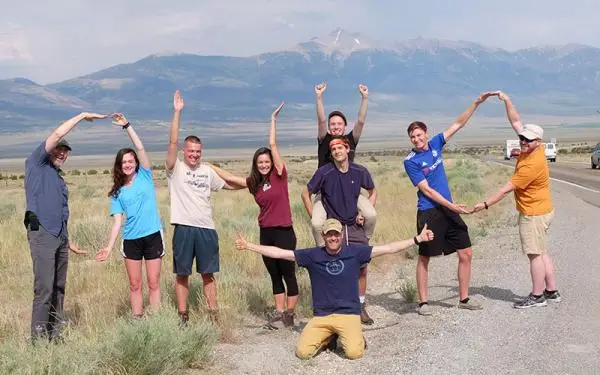
- Acceptance rate: 68%
- Average entry score: 1210-1430 SAT
- Student-to-faculty ratio: 18 to 1
- Estimated cost of attendance (tuition and fees): $29,368-$52,451
- Average earning potential for graduates: $33,000 (College Simply)
Students choose Ohio State University’s geography programs for their exceptional faculty, comprehensive curriculum, and cutting-edge research opportunities. The diverse course offerings enable students to explore human, physical, and environmental geography, fostering multidisciplinary understanding.
Strong connections with industry partners provide students with valuable internships and job prospects. Additionally, the supportive community and extensive resources elevate the student experience, making Ohio State a top destination for geography enthusiasts.
Source: OSU Geography
#18. Texas A&M University


- Acceptance rate: 64%
- Average entry score: 1160-1380 SAT or 25-31 ACT
- Student-to-faculty ratio: 21 to 1
- Estimated cost of attendance (tuition and fees): $26,268-$42,675
- Average earning potential for graduates: $47,520 (Grad Reports)
Texas A&M University’s geography program has earned a reputation as one of the most exceptional programs due to its faculty’s exceptional quality, innovative research, and practical learning opportunities.
With advanced facilities, a varied curriculum, and interdisciplinary partnerships, the program provides students with valuable insights into the field of geography.
Students can benefit from the program’s strong industry and government connections, which provide internship and job opportunities. This program’s emphasis on high academic standards, practical applications, and global perspectives make it a remarkable option for aspiring geographers.
Source: Texas A&M University Catalog
Similar articles like this:
#17. University of Illinois at Urbana-Champaign


- Acceptance rate: 63%
- Average entry score: 1200-1460 SAT
- Student-to-faculty ratio: 21 to 1
- Estimated cost of attendance (tuition and fees): $33,060-$50,510
- Average earning potential for graduates: $32,700 (College Simply)
The University of Illinois at Urbana-Champaign offers innovative geography programs emphasizing hands-on learning and real-world applications. Students benefit from a collaborative environment, working with renowned faculty in state-of-the-art facilities.
Coursework combines traditional geographic theories with cutting-edge technologies like GIS and remote sensing. Field experiences and research opportunities immerse students in diverse landscapes, equipping them with skills for successful careers in academia, government, or the private sector.
Source: Geography and Geographic Information Science at Illinois
#16. University of Washington


- Acceptance rate: 53%
- Average entry score: 1220-1470 SAT or 29-34 ACT
- Student-to-faculty ratio: 9 to 1
- Estimated cost of attendance (tuition and fees): $30,640-$58,470
- Average earning potential for graduates: $61,100 (College Simply)
University of Washington geography graduates flourish due to their comprehensive education, encompassing physical and human landscapes. With a focus on geospatial technologies, they develop strong analytical and problem-solving skills.
Their multidisciplinary approach embraces environmental, social, and economic perspectives, creating well-rounded professionals. Collaborative research opportunities and strong industry connections ensure they are prepared for diverse careers.
The university’s prime location in a thriving urban hub further enhances their success.
Source: University of Washington
#15. University of Wisconsin Madison


- Acceptance rate: 53%
- Average entry score: 1300-1480 SAT or 28-32 ACT
- Student-to-faculty ratio: 18 to 1
- Estimated cost of attendance (tuition and fees): $27,484-$55,372
- Average earning potential for graduates: $26,800 (College Simply)
Geography graduates from UW-Madison excel due to their comprehensive education, combining strong theoretical foundations with practical skills. Their success stems from rigorous coursework, exposure to diverse subfields, and opportunities for hands-on research.
UW-Madison’s esteemed faculty, cutting-edge resources, and collaborative learning environment foster critical thinking, problem-solving, and adaptability.
These graduates emerge as well-rounded professionals with robust networks, ready to tackle complex global challenges and make meaningful contributions in their field.
Source: Department of Geography
What’s it like to study at the University of Wisconsin Madison?
#14. University of Maryland College Park
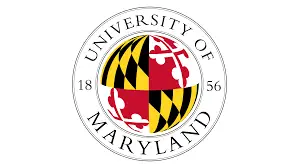

- Acceptance rate: 52%
- Average entry score: 1280-1470 SAT or 30-34 ACT
- Student-to-faculty ratio: 18 to 1
- Estimated cost of attendance (tuition and fees): $10,955-$50,000
- Average earning potential for graduates: $38,200 (College Simply)
The University of Maryland College Park’s geography programs are renowned for their cutting-edge research, interdisciplinary approach, and strong faculty expertise.
Students benefit from a diverse curriculum, modern facilities, and opportunities to engage in hands-on research, internships, and study abroad experiences.
This prestigious institution fosters critical thinking and professional development, empowering students to excel as future leaders in the dynamic world of geography and environmental science.
Source: Department of Geographical Sciences
Similar articles like this:
- 25 Best Schools For Economics In The US
- 25 Best Schools For Biology In The US
- 25 Best Schools For English Language and Literature in the US
#13. University of California, Davis
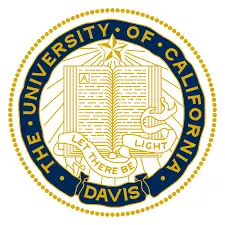

- Acceptance rate: 49%
- Average entry score: 1160-1400 SAT
- Student-to-faculty ratio: 20 to 1
- Estimated cost of attendance (tuition and fees): $37,122-$66,876
- Average earning potential for graduates: $27,800 (College Simply)
UC Davis presents a world of possibilities through their geography programs. With a dynamic curriculum that includes GIS, urban planning, and climate change, students have the opportunity to explore a variety of captivating subjects.
Additionally, this public university provides multiple opportunities for students to study abroad, participate in internships, and attend networking events, which are sure to enhance their career prospects. Exploring the exciting geography programs at UC Davis allows students to unleash their potential!
Source: UC Davis
#12. University of Georgia
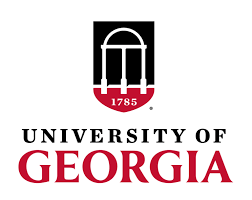

- Acceptance rate: 48%
- Average entry score: 1250-1460 SAT
- Student-to-faculty ratio: 17 to 1
- Estimated cost of attendance (tuition and fees): $27,958-$46,998
- Average earning potential for graduates: $28,200 (College Simply)
At the University of Georgia, geography students develop essential skills such as spatial analysis, GIS, remote sensing, and cartography.
They gain proficiency in qualitative and quantitative research methods, critical thinking, and problem-solving. Additionally, they learn to interpret and communicate complex geographic data effectively.
This comprehensive education equips students to address pressing environmental, social, and economic issues, preparing them for diverse careers in academia, government, and the private sector.
Source: UGA
#11. University of Texas at Austin
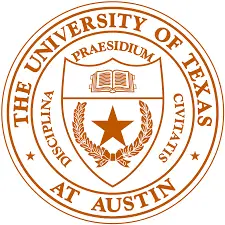

- Acceptance rate: 32%
- Average entry score: 1230-1500 SAT or 29-34 ACT
- Student-to-faculty ratio: 16 to 1
- Estimated cost of attendance (tuition and fees): $28,928-$57,512
- Average earning potential for graduates: $36,200 (College Simply)
University of Texas at Austin’s geography programs combines a liberal arts education with the skill sets required in today’s job market. While earning a bachelor’s degree in geography, students take courses that explore topics such as urban planning, environmental science, geology and cartography.
This way, students can gain a broad understanding of the many facets of geography while honing specific skills in one area. The university offers a wide range of classes in its undergraduate program, including:
Source: Department of Geography & the Environment
#10. University of Florida


- Acceptance rate: 31%
- Average entry score: 1290-1460 SAT
- Student-to-faculty ratio: 18 to 1
- Estimated cost of attendance (tuition and fees): $21,430-$43,708
- Average earning potential for graduates: $33,200 (College Simply)
The University of Florida’s geography programs cultivate well-rounded students through rigorous coursework, cutting-edge research, and real-world experience.
Students delve into diverse topics such as climate change, urban planning, and GIS technology, developing critical thinking and problem-solving skills.
Internships, fieldwork, and study abroad opportunities enrich their learning, while dedicated faculty mentorship prepares them for successful careers in academia, public service, or the private sector.
Source: UF Catalog
Similar articles like this:
#9. University of Miami
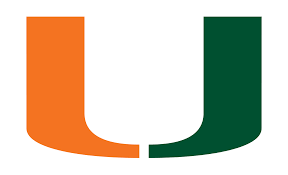

- Acceptance rate: 29%
- Average entry score: 1320 SAT or 30 ACT
- Student-to-faculty ratio: 13 to 1
- Estimated cost of attendance (tuition and fees): $75,230
- Average earning potential for graduates: $30,900 (College Simply)
The University of Miami offers top-tier geography programs, blending cutting-edge research with a dynamic learning environment. Students benefit from personalized education through small class sizes, hands-on experiences, and dedicated faculty mentors.
With a focus on real-world applications, the curriculum covers diverse topics such as urban planning, climate change, and geospatial technologies. This comprehensive approach prepares graduates for successful careers in academia, government, and the private sector.
Source: University of Miami
#8. University of California, Santa Barbara
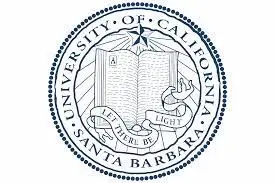

- Acceptance rate: 29%
- Average entry score: 26-31 ACT
- Student-to-faculty ratio: 17 to 1
- Estimated cost of attendance (tuition and fees): $37,415-$67,169
- Average earning potential for graduates: $33,200 (College Simply)
The University of California, Santa Barbara Department of Geography offers a comprehensive curriculum covering a range of topics, from physical geography to political geography, urban and rural studies, human-environment interactions, and climate change.
Faculty and students utilize cutting-edge research methods such as GIS and remote sensing technologies to better understand complex spatial patterns and relationships.
The Department fosters interdisciplinary collaborations, equipping every geography major with valuable critical thinking, problem-solving, and communication skills, preparing them to tackle pressing global issues and contribute to a sustainable and equitable future.
Source: UC Santa Barbara
What’s it like to study at the University of California Santa Barbara?
#7. University of North Carolina Chapel Hill


- Acceptance rate: 25%
- Average entry score: 1310-1500 SAT or 29-33 ACT
- Student-to-faculty ratio: 13 to 1
- Estimated cost of attendance (tuition and fees): $24,546-$51,725
- Average earning potential for graduates: $28,200 (College Simply)
Students relish studying geography at UNC-Chapel Hill because of its renowned faculty, diverse course offerings, and cutting-edge research opportunities.
The program emphasizes experiential learning, blending classroom theory with real-world applications. Students collaborate on interdisciplinary projects, tackling pressing global issues like climate change and urbanization.
In addition, the tight-knit academic community fosters meaningful connections, while the vibrant campus life and picturesque surroundings create an enjoyable and stimulating learning environment.
Source: UNC Geography
#6. University of Southern California


- Acceptance rate: 16%
- Average entry score: 1340-1530 SAT or 30-34 ACT
- Student-to-faculty ratio: 9 to 1
- Estimated cost of attendance (tuition and fees): $81,659
- Average earning potential for graduates: $63,000 (College Simply)
The University of Southern California (USC) offers exceptional geography programs, equipping students with skills in geodesign, landscape ecology, and more. These cutting-edge courses blend technology, environmental science, and spatial analysis to address real-world challenges.
USC’s expert faculty provide hands-on learning experiences, preparing students for diverse careers in urban planning, sustainability, and environmental management. Graduates emerge as innovative problem-solvers, ready to tackle global issues and shape the future of our world.
Source: USC Spatial Sciences Institute
Similar articles like this:
#5. University of California Berkeley
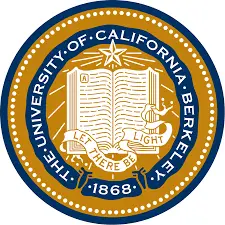

- Acceptance rate: 14%
- Average entry score: 1415 SAT
- Student-to-faculty ratio: 17 to 1
- Estimated cost of attendance (tuition and fees): $41,878-$71,632
- Average earning potential for graduates: $40,100 (College Simply)
The geography program at UC Berkeley provides students with a deep understanding of the physical and social systems that shape our world.
Students learn about topics such as climate change, globalization, and urbanization. The program also emphasizes practical skills such as spatial analysis, data visualization, and technological literacy.
Graduates of the program are well-equipped for careers in a variety of fields, including environmental consulting, urban planning, and geographic information systems (GIS) analysis.
Source: Berkeley Geography
What’s it like to study at the University of California Berkeley?
#4. University of California Los Angeles
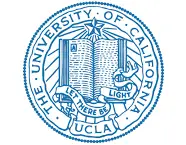

- Acceptance rate: 11%
- Average entry score: 1290-1520 SAT
- Student-to-faculty ratio: 18 to 1
- Estimated cost of attendance (tuition and fees): $16,847-$31,949
- Average earning potential for graduates: $33,000 (College Simply)
The geography department at UCLA is home to a renowned faculty of scholars who are leaders in their respective fields. The department has more than 20 full-time faculty members, many of whom have received numerous awards and recognition for their research and contributions to the field of geography.
Faculty members specialize in a wide range of topics, including environmental geography, political ecology, urban geography, and more. Many are also involved in interdisciplinary research, collaborating with scholars from other departments and institutions.
This diverse and accomplished faculty provides students with an exceptional academic experience, offering mentorship, guidance, and cutting-edge research opportunities.
Source: UCLA Geography
What’s it like to study at the University of California Los Angeles?
#3. University of Chicago


- Acceptance rate: 6.2%
- Average entry score: 1510-1580 SAT or 33-35 ACT
- Student-to-faculty ratio: 5 to 1
- Estimated cost of attendance (tuition and fees): $62,940
- Average earning potential for graduates: $40,900 (College Simply)
The University of Chicago boasts a premier geographical sciences program where students engage with cutting-edge research, dedicated faculty, and a supportive, collaborative learning environment.
Students explore the world’s ever-changing landscapes through courses in urban planning, environmental policy and GIS technology.
With access to world-class resources, state-of-the-art facilities, and unparalleled networking opportunities, graduates emerge ready to address pressing global challenges and drive sustainable solutions across numerous sectors and industries.
Source: University of Chicago
#2. Dartmouth College


- Acceptance rate: 6%
- Average entry score: 1449-1560 SAT or 32-35 ACT
- Student-to-faculty ratio: 7 to 1
- Estimated cost of attendance (tuition and fees): $81,662
- Average earning potential for graduates: $52,000 (College Simply)
At Dartmouth College, geography programs emphasize interdisciplinary study, fostering graduates with a deep understanding of human-environment interactions. Students explore spatial patterns, global issues, and geospatial technologies, culminating in a senior thesis or capstone project.
Graduates emerge as critical thinkers and adept problem solvers, equipped to excel in diverse fields such as urban planning, environmental policy, GIS analysis, international development, and academia. Dartmouth’s geography alumni shape our world’s future.
Source: Dartmouth
#1. Stanford University


- Acceptance rate: 5%
- Average entry score: 1495 SAT or 33 ACT
- Student-to-faculty ratio: 5 to 1
- Estimated cost of attendance (tuition and fees): $56,169
- Average earning potential for graduates: $49,100 (College Simply)
Stanford University’s School of Sustainability expertly molds geography students by providing interdisciplinary education in environmental science, policy, and management.
Through cutting-edge research, hands-on projects, and collaborations with leading experts, students gain a comprehensive understanding of global sustainability challenges.
The program emphasizes innovative problem-solving and leadership skills, preparing graduates to become effective change-makers in addressing pressing environmental issues and promoting sustainable practices in various sectors.
Source: Stanford University
Conclusion
We’ve taken you on a journey through the top US schools for geography degrees, exploring their unique offerings and distinguished programs. Armed with this knowledge, you can confidently navigate your academic future and find the perfect fit for your cartographical aspirations.
Remember, a world of opportunities awaits you within the realm of geography, so chart your course wisely and let your passion for this fascinating field be your guide.
Selection Criteria
Here is a list of the factors we considered when selecting the best colleges for geography degrees:
Please note that the order in this list might vary by ranking criteria and sources.
- Reputation and ranking of the school: We looked for schools that have a strong reputation and high ranking in geography.
- Faculty expertise, qualifications, and specialization: We researched the faculty members and their areas of expertise, and qualifications to ensure that the school has professors with relevant expertise and specialization in the areas of geography that are of interest.
- Curriculum and resources: We evaluated the curriculum to ensure it aligns with students’ interests and career goals and considered the quality of the school’s facilities and resources, such as labs, equipment, and libraries.
- Opportunities for hands-on learning and research: We looked for schools that provide opportunities for hands-on experience through internships, co-op programs, or fieldwork.
- Student support services and alumni network: We considered the availability of support services and the strength of the alumni network in providing mentorship, internships, and job opportunities after graduation.
- Extracurricular activities and diversity: We evaluated the availability of extracurricular activities and clubs that align with students’ interests and considered the school’s diversity and inclusivity.
- Networking and post-graduation support: We researched the school’s network of alumni and their post-graduation support for geography students, and also considered if the schools have a strong network of geography professionals and researchers.
Frequently Asked Questions
Q1. What is geography?
Geography is the study of the world, its features and inhabitants. It combines social science and natural science to understand how people interact with their environment.
Q2. What makes a good geography program?
A good geography program should combine theory and practice. It should offer courses in the field, as well as those focused on theory.
The focus of the program should be on social science and natural science but also consider other disciplines such as economics, politics or anthropology.
Q3. What kind of jobs does a geography degree get me?
Standard geography graduate can find careers as teachers or professors, urban planners, environmental specialists or conservationists.
Q4. What are the best geography schools in the US?
The best geography schools in the US are those that offer a well-rounded program of study. The following schools have shown themselves to be leaders in the field of geography.
- University of California, Berkeley
- Arizona State University
- University of Maryland College Park
- Ohio State University
- George Washington University
- Johns Hopkins University
- University of Chicago
Q5. How do I get into one of these programs?
To get into one of these programs, you will need to take a look at the requirements for admission and apply.
Most schools require students to have taken certain classes in high school, as well as SAT scores and grades.
References
[1] Official Websites
[2] Salary Data from Glassdoor, College Factual, Grad Reports, College Simply, and Zippia, among others
[3] Ranking references including news media such as Colleges Offering a Geography Major.


